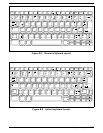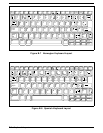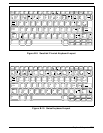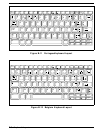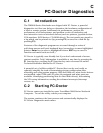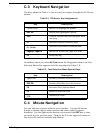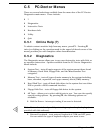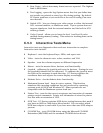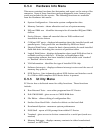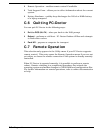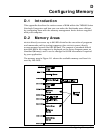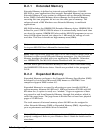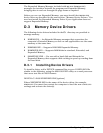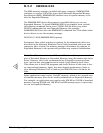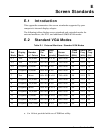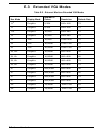
C.5.4 Hardware Info Menu
This menu contains functions that determine and report on the setup of the
computer. None of these functions perform diagnostic tests; however any
errors are included in the reports. The following functions are available
from the Hardware Info menu:
• System Configuration - lists main system configuration data.
• Memory Contents - shows allocation and use of system memory
• IRQ and DMA use - identifies interrupts for all standard IRQ and DMA
devices
• Device Drivers - shows all essential data on DOS resident and
installable device drivers
• COM and LPT ports - displays information about the installed serial and
parallel ports. Only ports that are identified by BIOS are listed
• Physical Disk Drives - shows the basic characteristics for each installed
fixed disk drive including the contents of partition tables
• Logical Disk Drives - displays information about each DOS drive that is
available and has a disk in it. If Stacker or DoubleSpace disk
compression software has been installed, details about each "stacked"
or "doubled" drive is shown
• VGA Information - identifies the type of installed VGA chip
• Software Interrupts - displays software interrupt vectors and the area of
memory they point to
• SCSI Devices - lists information about SCSI devices and interface cards
if a CAM or ASPI compliant SCSI device driver is present
C.5.5 Utility Menu
PC-Doctor has a dedicated menu for utility functions. These functions
include:
• Run External Tests - runs other programs from PC-Doctor
• Edit CMOS RAM - gives access to CMOS RAM data
• File Editor - allows editing of configuration files
• Surface Scan Hard Disk - checks for defects on the hard disk
• Benchmark System - measures system performance
• DOS Shell - opens a DOS prompt from within PC-Doctor
• Terminal - gives access to devices connected to a serial port (such as a
modem)
• Memory Debugger - displays memory contents in either hexadecimal,
decimal, or ASCII form
Diagnostics C-5



